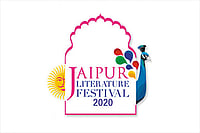Cannes. I like to call it a congregation, a fluid community of like-minded people—pilgrims following a common god. It forms and dissolves, then reforms the next year, always around the same altar. Good, deep, rich narrative. A good story, told well, in a complex blend of moving image, sound, verbal gestures and our own memory and associations. Cinema is, in other words—a language of its own, in which all languages of the world participate, before which all nationalities and cultures submit. Hollywood, Tollywood, Bollywood, the auteurs, the army of indies, the lone wolves…the name-tags cease to matter. Of course, if you scan the press, it would seem as if Cannes is all about who wore what on that proverbial red carpet. Was Deepika better than Kangana or vice versa? The question is vital to the future of the planet, if you go by the attention our breathless, bedazzled media bestows on it. I genuinely like the razzle-dazzle and recognise its need. There are times, though, when we may be permitted to look beyond. Especially this year when, dare I say, India was the toast of the French Riviera. Yes, this year the narrative was deep and rich.
At Cannes, there are layers within layers, wheels within wheels…. But at both the manifest and the subliminal levels, what really matters is: who told a good film, strong, meaningful. It’s in this light that I look upon the choices made by India with profound satisfaction. The official policy was simple: taking ‘India’ to Cannes. Not just Bollywood. The idea was to make India the story. The India that’s transforming, caught in its millennial churn. We felt it necessary to offer a tribute to it by investing in cinema that was truly meaningful.

























